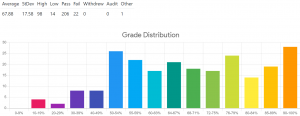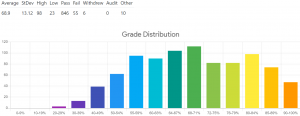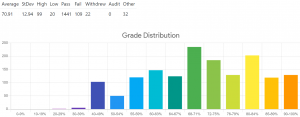Out of all the organic chemistry courses I’ve taken, this one is by far my favorite! CHEM 213 is an organic chemistry course targeted towards chemistry and biochemistry majors.
format of the course
The format is nothing special; there are online canvas quizzes, two midterms, and one final exam. Lecture consists of the professor writing on a doc-cam while talking through the steps and nuances of different types of reactions. The professor for this course is amazing, Dr. Sammis is always willing to answer questions even if they’re simple (and he never makes you feel dumb for asking them). He’s also great at reading the room! He’ll ask if the class with okay with a concept, and even if noone is brave enough to raise their hand, he’ll sense the uneasiness and go over it again. Even though this is a notoriously difficult course, it’ll feel like you’re being set up to succeed rather than fail.
GPA 🙂 or 🙁
Although interesting, this course will probably not be good for your GPA (that said if you’re really interested in the topic it could also boost it like it did mine). The midterms will feel like a time-crunch given that you only have 50 minutes to complete them, but they’re not really designed to trick you. The final exam was significantly harder than the midterms, but that might have been due to the end-of-term topics being inherently more difficult to understand.
Again, Dr. Sammis always tries to make things as fair as possible, even though midterms are 7-8 pages long – they’re out of 80-90 points (lot’s of part marks!). CHEM 213 has by far one of the most thought out and fair marking schemes I have seen in chemistry courses. My class ended up with a 68 average. Here’s a distribution from winter 2018:

CHEM 213 grade distribution. Credits: ubcgrades.com
verdict? to take or not to take
If you’ve taken the introductory organic courses (CHEM 203 or 233) I would definitely take it! The topic is really interesting. It’ll be worth it even though the course is hard.


